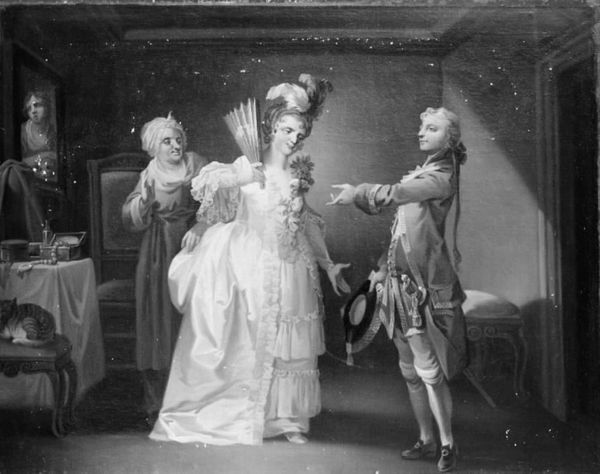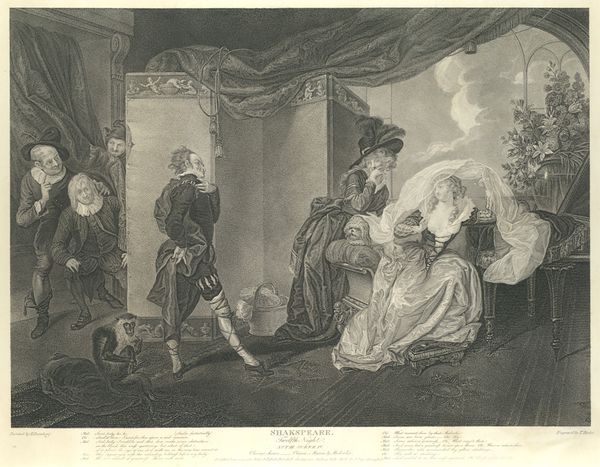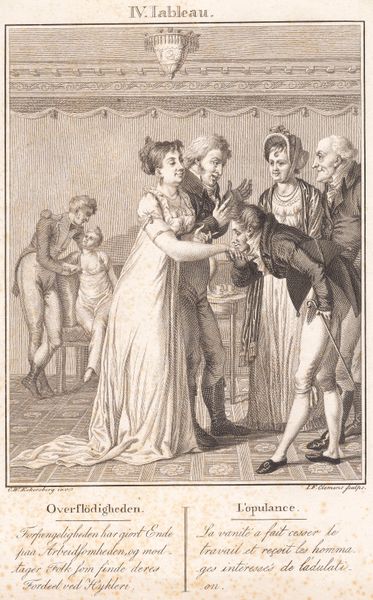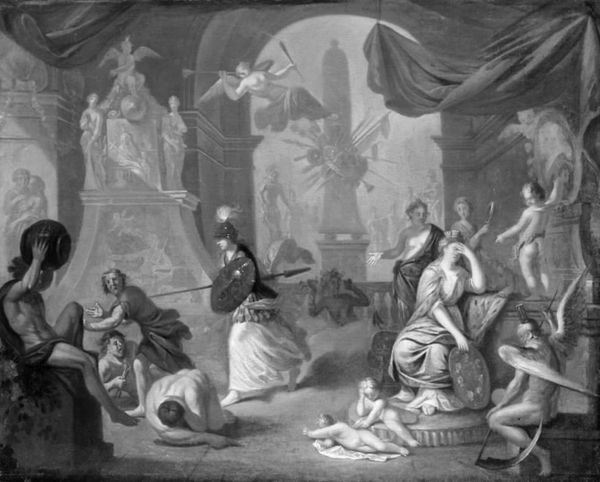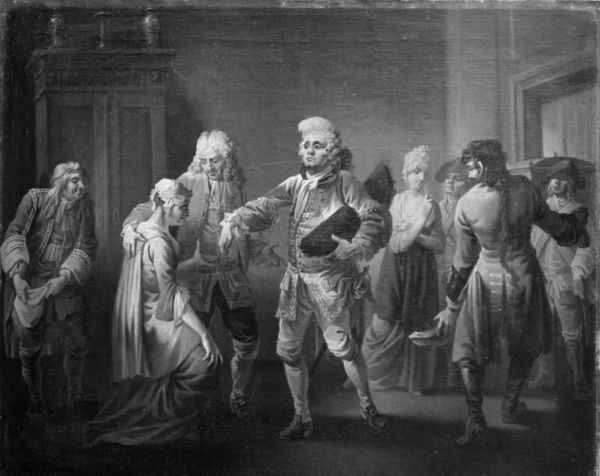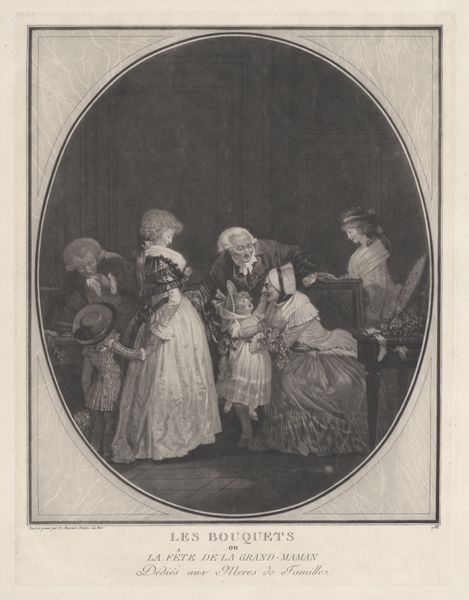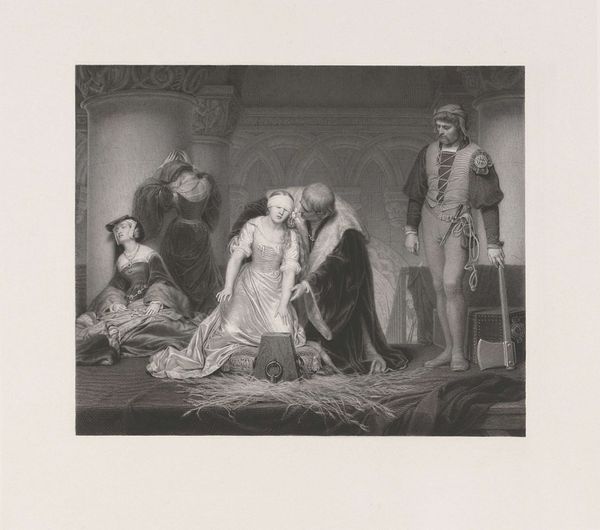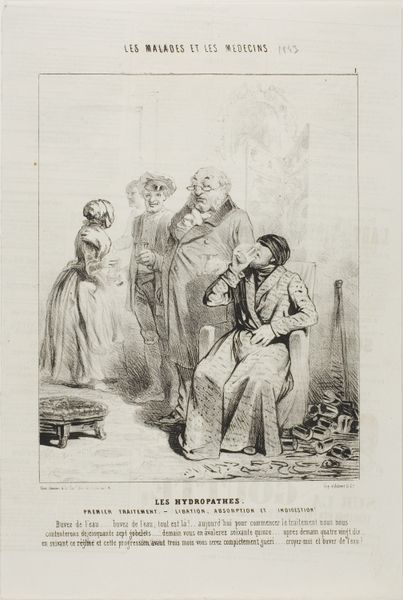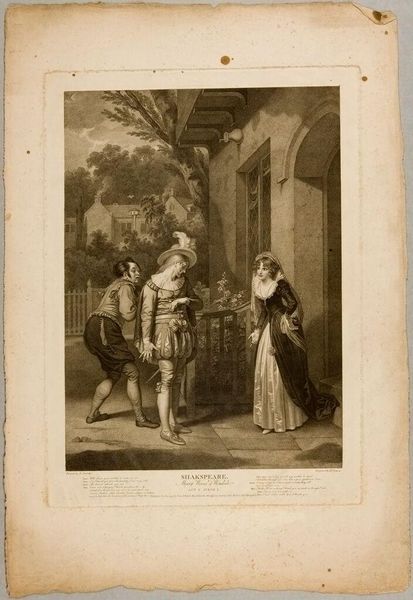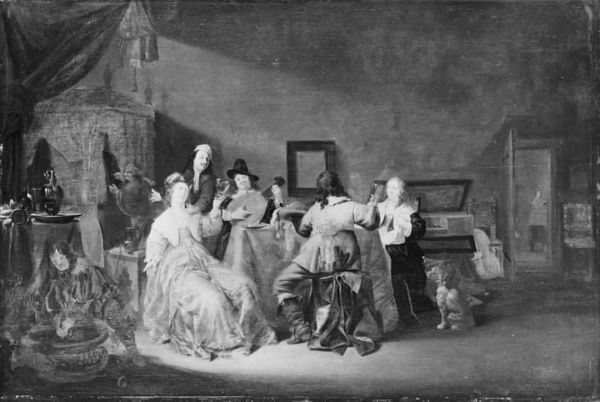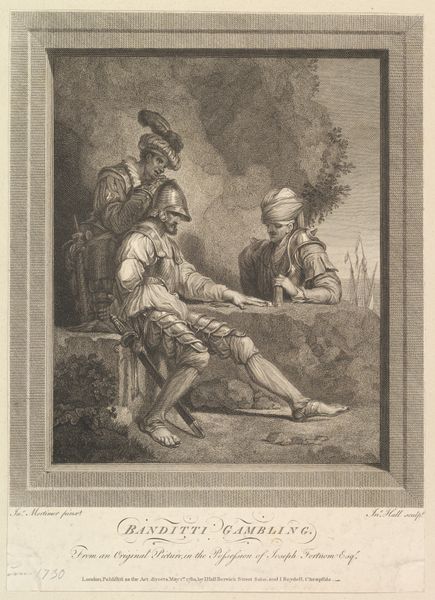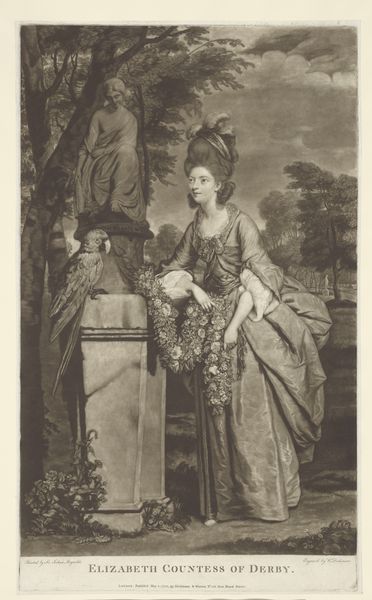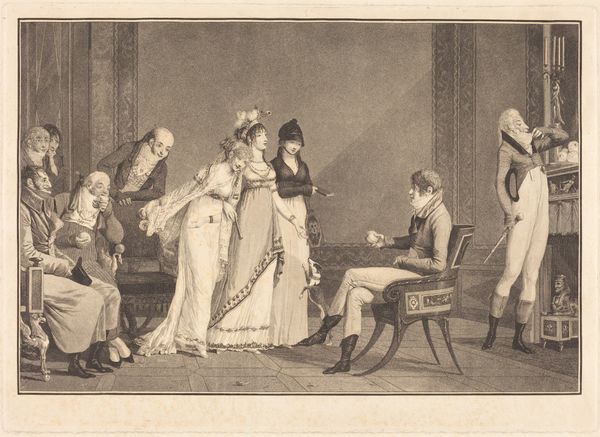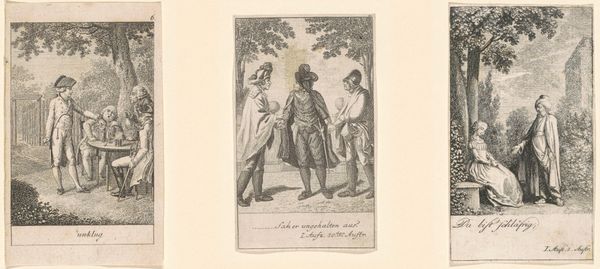
drawing, print, engraving
#
drawing
#
black and white photography
# print
#
landscape
#
soldier
#
black and white
#
19th century
#
men
#
genre-painting
#
engraving
Dimensions: 13 x 9 7/8 in. (33 x 25.1 cm) (image) 14 3/16 x 10 1/8 in. (36 x 25.7 cm) (sheet)
Copyright: Public Domain
Curator: Immediately, I find a stillness within this composition that belies its suggestive title and theme. Editor: We’re looking at "The Camp Laundry," an engraving from 1782. It offers a glimpse into daily life through a somewhat staged scene with meticulously detailed figures. The artist remains anonymous. Curator: Yes, those figures, particularly the women, their bodies performing this labour. The composition seems charged by their actions, washing and hanging garments while being observed. Is it fair to suggest that this scenario implies something larger, a possible dynamic of social tension or, worse, objectification? Editor: Absolutely, the scene raises numerous questions. Considering its creation in the late 18th century, it inevitably touches upon gender roles within a military context and the labor divisions within camp life, hinting at the support roles marginalized behind any army. The soldier's presence alone—observing, judging even—opens questions. Curator: I can't help but note his stance, his posture implying control over these women occupied in hard work, raising a critique of patriarchy, perhaps unintentionally. How do contemporary audiences contend with the artwork's context and potential implications, beyond an antiquated snapshot? Editor: Indeed, modern reception must scrutinize how images like these bolster—or subvert—narratives of power and labor. Is the work documenting, or is it endorsing? Maybe it attempts both. I wonder how it reflects broader societal attitudes towards gender and work from that period? How has the function and portrayal of "laundry work" changed culturally since? Curator: Looking closer, there’s also a commentary on the division of space, I believe. The natural setting becoming an exploited landscape with an army and a camp installed onto it; that in turn infringes upon the work. Are these woman local civilians? Camp followers? And at what economic stake? The artist prompts uncomfortable but vital questions, don't you think? Editor: I agree entirely; art’s public role is frequently rooted in these unsettling explorations, demanding responses. Thinking about "The Camp Laundry," perhaps understanding the economic, societal backdrop against it was produced makes it more than just an attractive picture, it becomes a poignant snapshot, a question still open. Curator: Exactly. And now, perhaps we too contribute in how its image changes with our new responses.
Comments
No comments
Be the first to comment and join the conversation on the ultimate creative platform.
